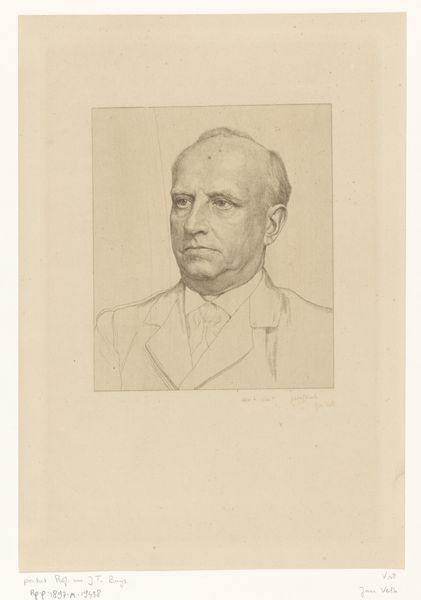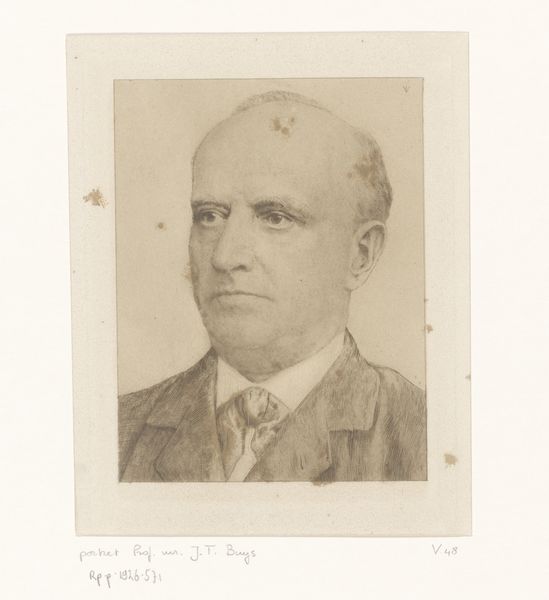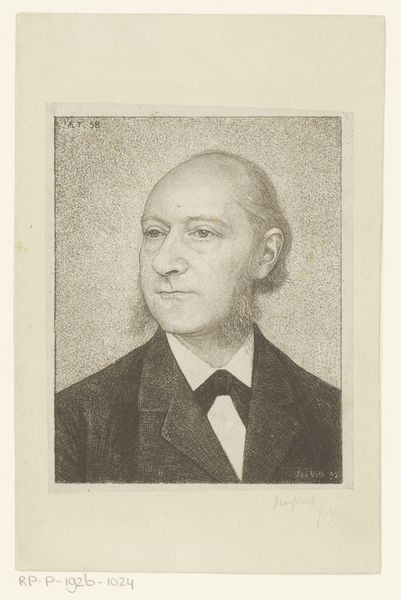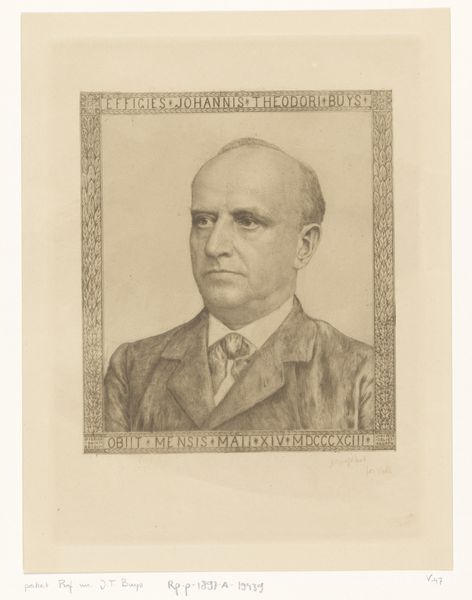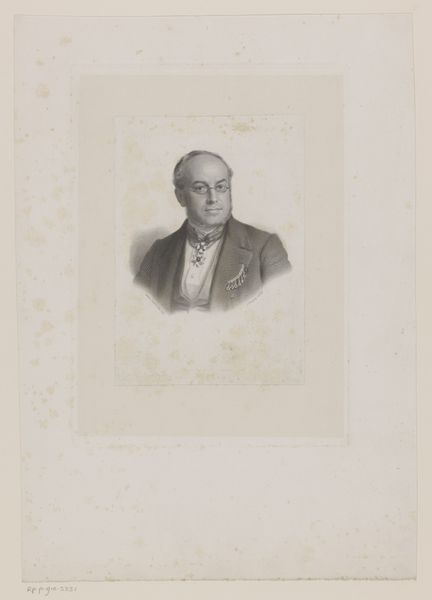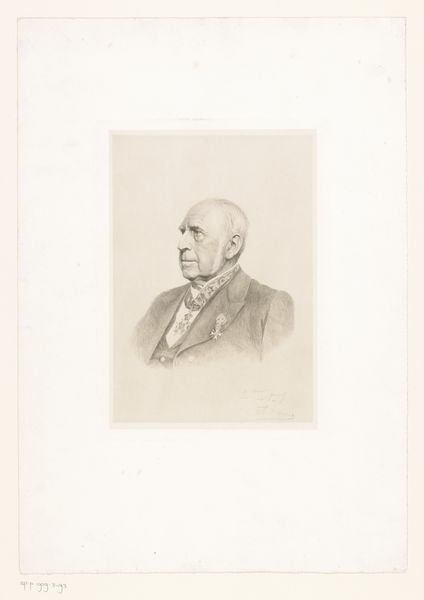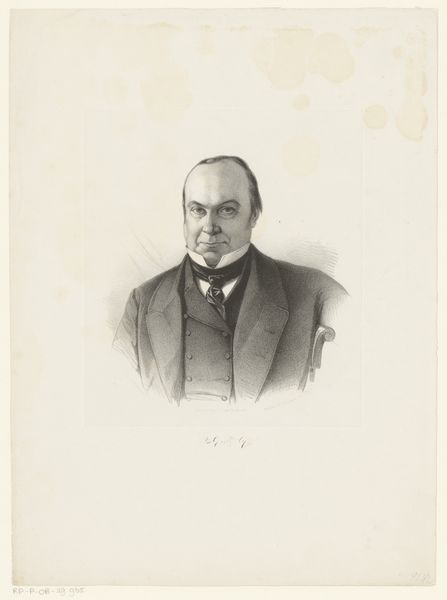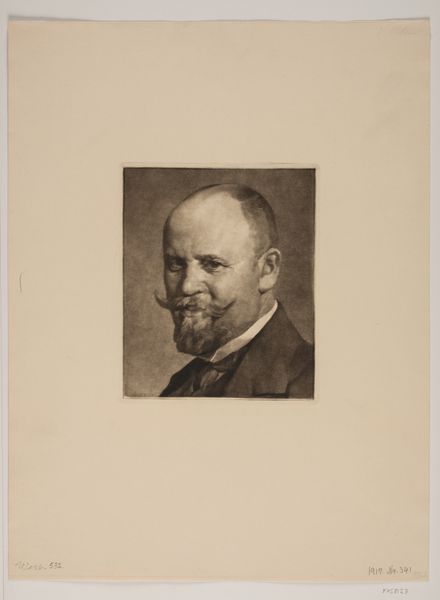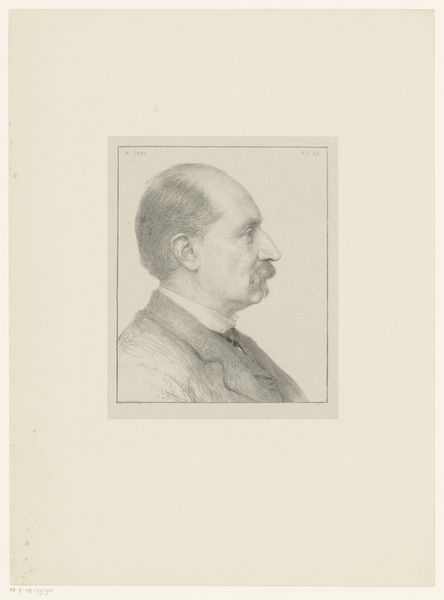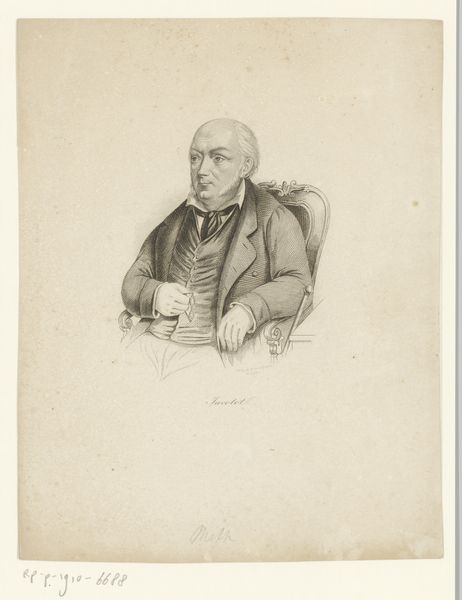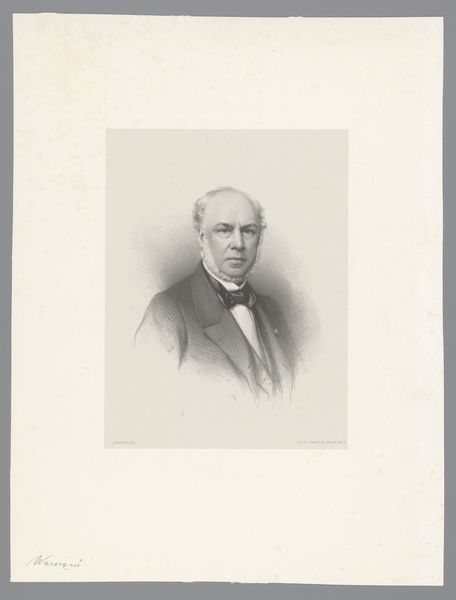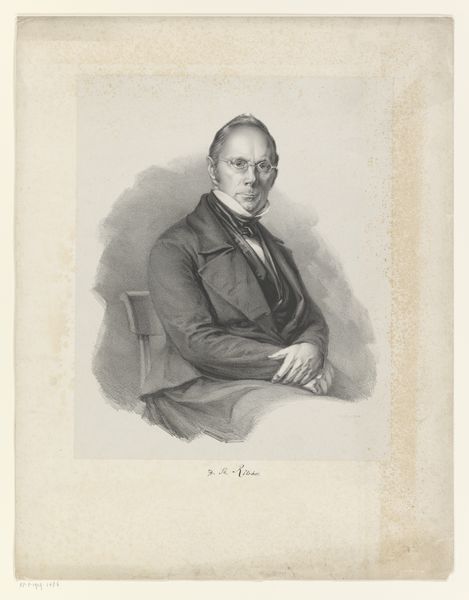
drawing, pencil
#
portrait
#
pencil drawn
#
drawing
#
pencil
#
portrait drawing
#
academic-art
#
realism
Dimensions: height 157 mm, width 116 mm
Copyright: Rijks Museum: Open Domain
Curator: This is Jan Veth’s pencil drawing, "Portret van Charles Marius van Deventer," created in 1886. It's currently held in the Rijksmuseum. What strikes you first about it? Editor: A certain severity. The portrait's tight cropping and the subject's direct gaze lend a rather intense mood, like a man weighed down by something. Curator: Precisely. Veth captures a psychological depth using the simplicity of the pencil. It allows us to focus on the expression – the slight furrow of his brow and his mouth suggest introspection, maybe even apprehension. The use of realism creates an accurate image of Charles, but how accurate? Is it masking other underlying concerns through this medium? Editor: I agree, this almost clinical level of detail speaks volumes. Knowing that van Deventer was an official in the Dutch East Indies at the time adds another layer. It invites questions about his role in colonial administration, doesn't it? What responsibilities and burdens did that impose on someone like him? There are heavy implications tied to his social identity and this man’s participation in historical power dynamics. Curator: The cultural weight definitely bears examination. There is tension here as it's almost a memento mori. Think about how these kinds of portraits helped construct and reinforce power. I feel like it almost gives the viewer a chance to reflect upon their own position and mortality. The stark simplicity might lead to introspection on legacy, right? Editor: Absolutely. It humanizes a figure often associated with a complex political landscape, opening avenues to consider his interior life while acknowledging the system that he's involved in and his possible role in oppressive political issues. What were his personal politics versus the public’s image of him? What kind of responsibility did he have, as a figure of power, to represent more of those impacted by colonial rule? It provokes reflection about colonial history. Curator: Yes, seeing past the surface—revealing complexities beyond the immediate representation of success or power. I appreciate how the piece encourages questioning societal positions even across the century. Editor: For me, it highlights the importance of confronting difficult histories and considering how personal narratives intersect with broader social structures.
Comments
No comments
Be the first to comment and join the conversation on the ultimate creative platform.
